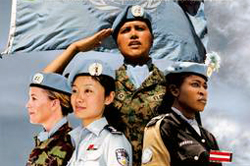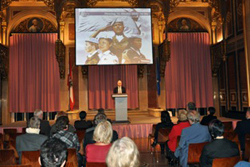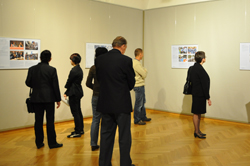


"Women in Peacekeeping: The Power to Empower" is the title of a new exhibit that opened at the Museum of Military History (HGM) on 12 October in collaboration with the United Nations Information Service (UNIS) in Vienna and the UN Department of Peacekeeping Operations.
The exhibition highlights women's contributions to peacekeeping and peacebuilding operations of the United Nations. Over the past 60 years, peace missions have evolved from the traditional monitoring of ceasefire agreements between states to multidimensional operations including protection of civilians, assistance with disarmament and restoring the rule of law as well as many other facets of nation building. These expanding responsibilities make the need for women peacekeepers more pressing than ever. Women are not merely in the missions to do women-specific work, as Christian Ortner, Director of the HGM pointed out at the opening ceremony: "It took a while for men to understand what the role of the women in the mission is and integration was not always easy. However, women are an integral part of the missions, not only in terms of the missions' functioning, but also their acceptance and legitimization in the host country."
In 2000, the UN Security Council adopted its landmark Resolution 1325 on Women, Peace and Security. For the first time, the Council recognized that women share the burden of armed conflicts and should thus have a role in their prevention and resolution: "During armed conflicts, women and girls are victims of violence, systematic rape, sexual abuse, kidnapping, forced labor and suffer from the destruction of their families and their homes. But women are not just victims of conflicts, they are also key players in conflict resolution and important actors in peace processes," said UNIS Director Maher Nasser.
Today more than 100,000 men and women serve in 18 peace operations in military, police and civilian functions. In all of these fields, women have proven that they can perform the same roles, to the same standards and under the same difficult conditions as their male counterparts. Women are even better suited than men to carry out specific tasks such as interviewing in women's prisons or interviewing victims of sexual violence. The exhibition provides many examples of female peacekeepers also acting as a role models to their environment in the realm of politics, medicine, journalism and human rights, in remote areas such as Darfur, the Congo or Haiti where the female blue helmets truly embody the concept of "The power to empower".
The exhibition runs until 14 November and is part of a series of exhibitions in the HGM to commemorate 50 years of Austrian peacekeeping.